|
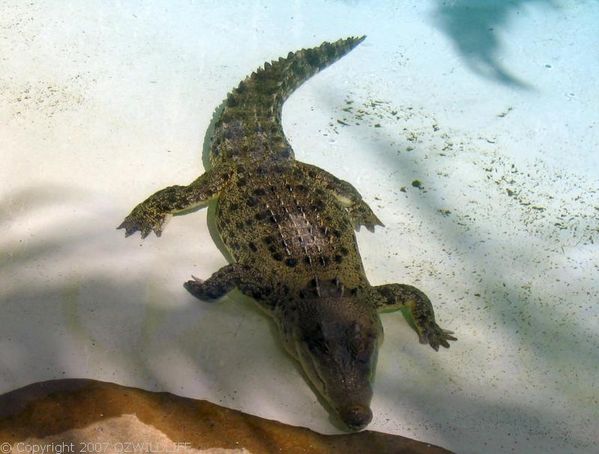
Saltwater Crocodile photographed at Australia Zoo.
Image by ozwildlife - Some rights reserved.
|
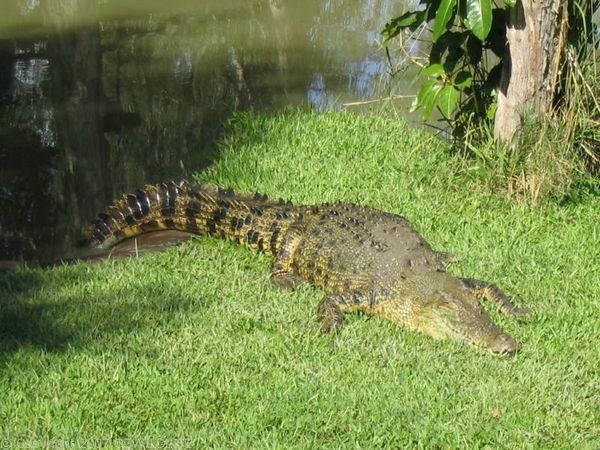
Saltwater Crocodile photographed at Australia Zoo.
Image by ozwildlife - Some rights reserved.
|
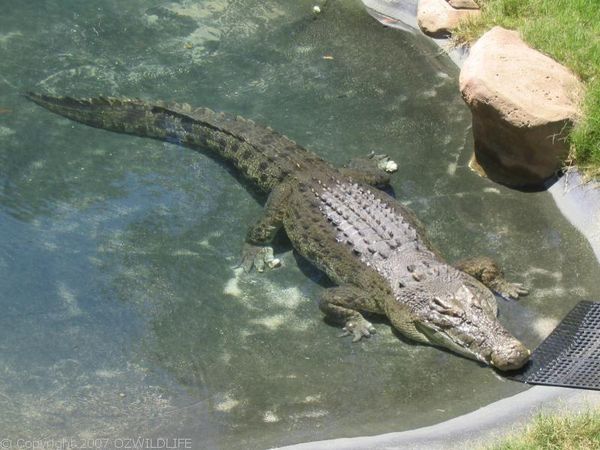
Salt-water crocodile at Currumbin Sanctuary.
Image by ozwildlife - Some rights reserved.
|
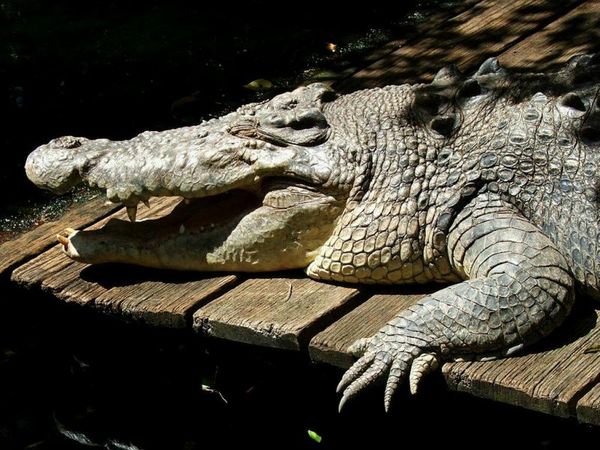
Saltwater Crocodile
Photograph copyright: Nickolay Tilcheff - all rights reserved. Used with permission.
|
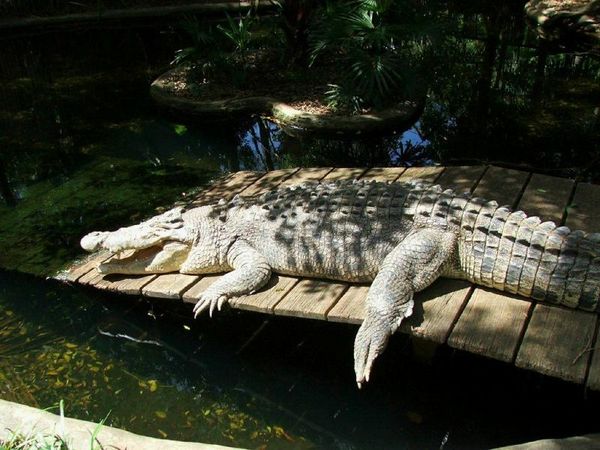
Saltwater Crocodile
Photograph copyright: Nickolay Tilcheff - all rights reserved. Used with permission.
|
|
|
SALTWATER CROCODILE FACTS |
Description
The Saltwater Crocodile is grey or brown with whitish underside. It has strong stout body, with large head and heavy jaws. Juveniles are normally pale tan in colour with black stripes and spots on the body and tail.
Other Names
Estuarine Crocodile
Size
The Saltwater Crocodile is the world's largest reptile. It can grow to 7m long, but rarely grows more than 5m
Habitat
They live in rivers and swamps often traveling well upstream in the major rivers.
Food
Salt-water crocodile eat fish, reptiles, birds and mammals. Several people have been attacked by these crocodiles in recent years in northern Australia.
They silently stalk their prey or sit and wait for prey to come past. They seize prey in their jaws then roll to tear pieces of their prey. Small prey is swallowed whole.
Breeding
They lay about 60 white eggs in a They lay their eggs in a mound of plants and mud on the river bank. The temperature of the egg determines the sex of the new born crocodile. Less than 30° C and all hatchlings are female. Above 32° C and all hatchlings are male. Saltwater Crocodiles care for their young helping them from the nest when they hatch. Only a very small number of these survive in the wild and grow to be adult crocodiles.
Range
Tropical parts of Queensland, Northern Territory and Western Australia. They are found on the coast and inland in rivers for up to 100 kms or more from coast.

Credits:
Map is from Atlas of Living Australia website at https://biocache.ala.org.au licensed under Creative Commons Attribution 3.0 License.
Notes
Crocodiles are farmed in Northern Australia and their leather used for handbags, hats, wallets, purses, and belts. Crocodile meat is sold for gourmet food trade.
Classification
| Class: | Reptilia | | Order: | Crocodilia | | Family: | Crocodylidae | | Genus: | Crocodylus | | Species: | porosus | | Common Name: | Saltwater Crocodile |
Relatives in same Genus
Freshwater Crocodile (C. johnstoni)
|
|

